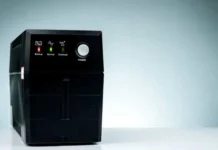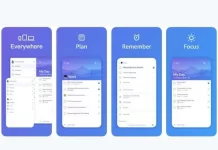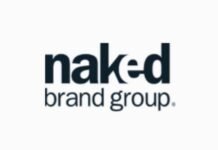All organizations, although the most appropriate solutions are often different, face challenges that you must overcome. It is sometimes only a small change to crucial processes that are needed. However, solving problems other times may require physical installation. And this sometimes means that you buy or create software applications. The ‘Application Architect’ encapsulates these software-based solutions.
Because of the unparalleled pace of technological change today, analysts at Gartner forecast that by 2018, over 75% of multi-company processes will become composite applications.
TOGAF (Open Group Architecture Framework) defines the objective of the Application Architecture as “the organization of the main types of application systems needed to process data and support business.” That is to say, an application architect defines the framework and sets out a blueprint for implementing application-based solutions. This high-level, systematic approach aims at reducing errors, maintaining schedules, budgeting, and IT alignment with business units.
The TOGAF certification offers an excellent reputation for IT professionals and architects because it confirms their ability to simplify and advance complex technical processes. TOGAF consists of four specialization areas known as the architecture fields. It contains:
- Business architecture
- Data architecture
- Applications architecture
- Technical architecture
Now let’s learn more about application architecture.
What is Application Architecture?
Application Architecture is defined in several ways. TOGAF states, “The objective is to identify the major applications necessary to process and support business data [in the Application Architecture].” “The application architecture determines applications necessary for managing data and support of business functions,” states FEA.
Application architecture domain – describes the different applications, their interactions, and relations with the company’s core business processes.
It sets the foundation, in your application context, for agility, scalability, and reliability. ‘Agility’ is the keyword here. Overnight, you will reinvent traditional companies. Your firm can respond rapidly and effectively to sudden changes in the corporate landscape with successful application architecture.
The application architecture domain can help define several viewpoints. These views reflect the consideration of an EA when working with and within the Applications Architecture domain. These viewpoints are:
- Capability view: This view shows how applications align with business capacity. When viewed together, it is a superset of the following points of view. By looking at its business capacities in the application architecture domain, you get a good idea of how those applications support the company directly.
- Technology view: The view of technology reflects the technology behind the applications. Given the number of rational activities, the phrase “complexity equals cost,” particularly reduces such complexity through standardization activities. It reflects on the importance of the technology perspective. Some components of technology to be considered are:
- Software: The application and the application software depend on the functionality (web servers, application servers).
- Infrastructure: The hardware and network components underlie the application and the support software.
- Development: How you create and maintain the application. The application includes development components, i.e., customizable functions and web service, and APIs developments.
- Integration: The integration interfaces provided by the application and the integration with other apps and data sources require the application to work.
- Type: Reflects the application type (mash-up, three-tiered).
- Organization view: Organizations are made up of people, and they use applications to do their jobs. Trying to define the application architecture without considering the organization that uses/discovers/changes it is like designing a car without thinking about who will drive it. The people aspect of the application is reflected in this view.
- Information view: If you or not subscribe to the view that “information leads the company” is an important fact, the primary functions of the business applications are management, creation, and governance of this information. This view shows how the applications are linked with information (or how they relate to the domain Information Architecture on higher levels).
- Application service view: Today’s organizations strive to be more agile. As an EA, one of the main ways to achieve the necessary agility in the application architecture domain is using ‘services’ (think SOA and web services). The combined application functions for reuse, whether they involve the construction of apps from the ground up using services or enabling an application to be purchased or already helped to be “serviced,” allow flexibility in using those apps to support the necessary business agility.
- Delivery model view: Today, it is difficult to talk about EA without hearing the terms ‘cloud’ or shared services. Organizations are examining ways of delivering applications for several reasons, reducing costs (both CAPEX and OPEX) and improving agility (such as market time). From an EA perspective, the way an application is implemented affects the overall architecture of the company. The Enterprise Architect should consider how applications are delivered when designing the TOGAF Enterprise Architecture from integration issues, SLA requirements to safety and compliance issues.
How to get a TOGAF certification?
TOGAF certification helps to provide a clear path for professional development in their career. The entry-level TOGAF 9 Foundation and the TOGAF 9 certification program are currently two levels.
- TOGAF 9 foundation – This is for professionals who have the basic know-how of the TOGAF 9 standard. It is designed to verify their knowledge of the terminology, structure, and basic concepts.
- TOGAF 9 certification – This certification ensures better knowledge of the TOGAF 9 standard for professionals and can analyze and apply their knowledge to develop an architecture for companies.
Since TOGAF is a worldwide recognized credential, it holds a high level of trust from all your customers, employees, and staff. When you ask others or yourself, is it worth TOGAF recognizing that the basic costs of certification have to be regarded as an investment in yourself and your future. TOGAF is aimed at persons who participate in the process of architecture. It includes CTO, business owners, architects of infrastructure, and applications. They are the architecture review board.
Conclusion
Although by no means complete, we are applying these views to the application domain, giving a good knowledge of what an EA needs to take in making changes to the Application Architecture domain. Finally, when developing the overall business architecture, the application architecture is one of several architecture domains that an EA must consider.

































